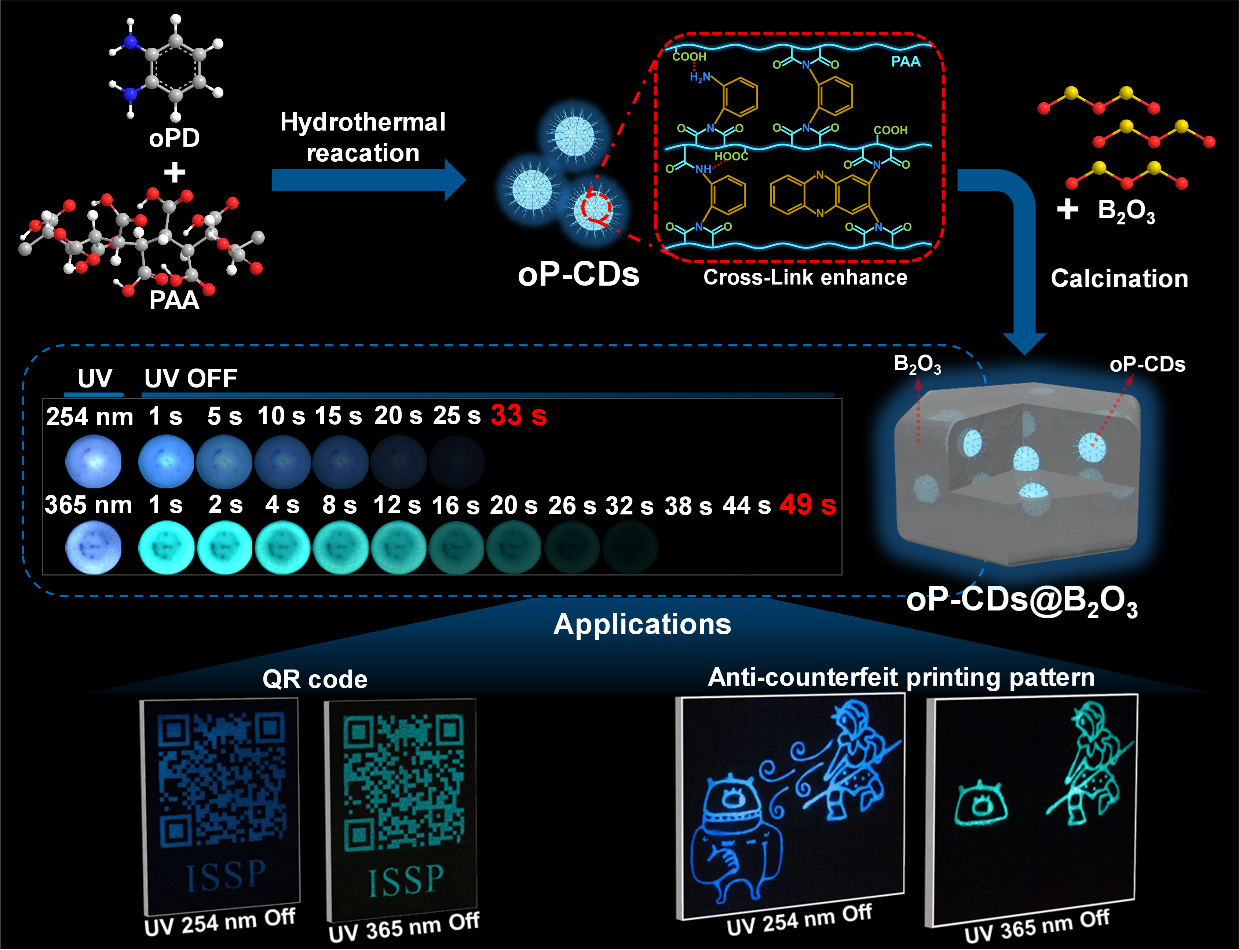
A research team led by JIANG Changlong from the Hefei Institutes of Physical Science of the Chinese Academy of Sciences developed a novel method to produce carbonized polymer nanodots capable of emitting multi-color ultra-long room-temperature phosphorescent (RTP) from blue to green.
"These materials have potential applications in anti-counterfeiting and information encryption," said ZHANG Qipeng, a member of the team.
The research was published in Advanced Science.
RTP materials glow even after the light source is removed, making them valuable for various applications such as security features, data protection, displays, and medical imaging. Carbon dots (CDs) are a type of RTP material known for being easy to make, stable under light, and safe. But making bright and durable RTP materials with CDs is difficult due to non-radiative energy loss. It is also difficult to obtain different phosphorescent colors from single carbon dots materials, which limits their use. Therefore, the development of multi-color, long-lived, and high-quantum-yield RTP carbon dot materials is imperative.
In this study, the researchers synthesized carbonized polymer nanodots using ortho-phenylenediamine (oPD) and polyacrylic acid (PAA) hydrothermal synthesis. They then baked these dots with boron oxide (B2O3) to make them glow for a long time, from blue to green.
Adding oPD made these CDs glow in different phosphorescent colors due to the doping of nitrogen element. PAA, which is a long chain of molecules, made these CDs act like other carbonized polymer nanodots made from polymers. The long-chain cross-linking structures of these polymers fix the luminescent groups inside the carbonized polymer dots through covalent bonds and hydrogen bonds, reducing non-radiative losses and thereby enhancing the phosphorescence of the CDs.
The B2O3, which acts like a hard shell around the CDs, also helped protect the phosphorescent energy from non-radiative losses. The synergistic effect of the cross-linked polymer structures inside the carbon dots and their rigid shells enables these carbon dots to exhibit excellent phosphorescence, with a visible lifetime of up to 49 seconds and a maximum phosphorescence quantum yield of 19.5%. They also exhibit remarkable resistance to photobleaching. As a result, these carbon dot materials hold great promise for applications in anti-counterfeiting and information encryption.
This study not only improves our understanding of RTP materials, but also paves the way for the creation of versatile and high-performance materials for security and privacy, according to the team.

Schematic diagram of the preparation of multi-color long-lived room-temperature phosphorescent composite materials based on carbon dots and their potential applications in anti-counterfeiting. (Image by ZHANG Qipeng)

86-10-68597521 (day)
86-10-68597289 (night)

86-10-68511095 (day)
86-10-68512458 (night)

cas_en@cas.cn

52 Sanlihe Rd., Xicheng District,
Beijing, China (100864)

